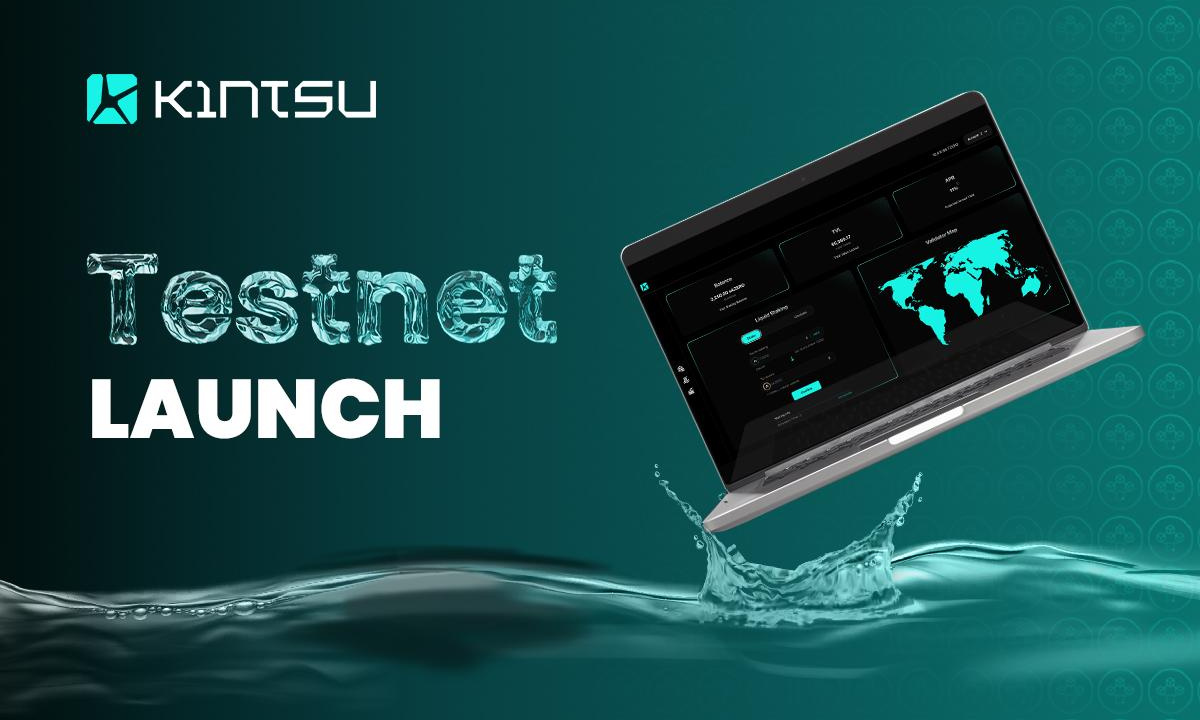The Arbitrum ecosystem is one of the ecosystems that is attracting the attention of the crypto market, and its future may develop further. Today, let’s explore the top 5 DeFi projects on Arbitrum with Coincu.
What is Arbitrum?
Ethereum, the world’s second-largest cryptocurrency by market capitalization, has long grappled with issues of congestion and high gas fees. The introduction of Layer 2 scaling solutions has significantly alleviated these problems, with Arbitrum emerging as a leading player in this space. Alongside Optimism and zkSync, it has become a game-changer for the Ethereum ecosystem.
Layer 2 solutions, such as Arbitrum, are designed to operate atop Ethereum’s Layer 1 while inheriting its security features. These solutions are engineered to process a higher volume of transactions, reduce costs, and accelerate transaction confirmation speeds compared to Layer 1. The result is a more efficient and cost-effective Ethereum network.
Offchain Labs, the team behind Arbitrum, has tackled Ethereum’s scalability issues by taking a unique approach. Instead of executing transactions on the main Ethereum chain, Arbitrum processes them off-chain and subsequently posts the results to the Ethereum network. This innovation has led to faster and more affordable transactions while preserving the decentralization and security of Ethereum.
Optimism, another key Layer 2 solution, employs an Optimistic Rollup approach. This technology is comparatively simpler to deploy than zkSync’s ZK Rollup, providing Arbitrum with a significant advantage. Notably, Arbitrum transitioned to its mainnet in late 2021, positioning itself as a formidable player in the Layer 2 ecosystem.
Arbitrum’s mainnet launch represents a substantial leap forward in the pursuit of scaling Ethereum. By moving transaction processing off-chain, it has reduced the burden on Ethereum’s Layer 1, delivering tangible benefits in terms of speed and cost. While some might argue that it is an underrated technology compared to ZK Rollup, Arbitrum has successfully addressed Ethereum’s congestion issues and remains a prominent choice for developers and users alike.
Arbitrum’s prominence in DeFi
Arbitrum offers a unique and multifaceted approach with three expansion solutions: Rollup (OPU), Channels, and Sidechains. These innovations have garnered attention for their ability to significantly enhance Ethereum’s capabilities and provide cost-effective solutions for users.
- State Channels: Arbitrum’s State Channels introduce a novel concept where users send Ethereum state snapshots into a multi-sign contract. These snapshots encompass vital data, including address balances. This system allows for off-chain transactions with instantaneous finality and superior privacy, all while maintaining the security and trust of Ethereum.
- Sidechains: The deployment of independent blockchains with their distinct consensus rules is a hallmark of Arbitrum’s Sidechains. By leveraging Sidechains, Arbitrum provides a scalable solution that facilitates the seamless execution of transactions, contributing to an improved Ethereum ecosystem.
- Rollups: Rollups, a cornerstone of Arbitrum’s expansion solutions, function as advanced, non-custodial sidechains. Arbitrum boasts impressive compatibility with Rollups, supporting four main types: Optimistic Rollups, zkRollups, Plasma, and Validium. This diversity in Rollup options ensures flexibility and scalability for developers and users alike.
In addition to its versatile expansion solutions, Arbitrum offers several noteworthy features:
- High EVM Compatibility: Arbitrum stands out as one of the most EVM-compatible Rollups. It welcomes developers proficient in languages like Solidity and Vyper, which can compile to EVM.
- Robust Developer Tools: Arbitrum’s development team is committed to lowering the barriers to entry for building Layer 2 solutions. They have made development documents available to the community, enabling developers to tap into existing Ethereum tools.
- Low Transaction Fees: As a Layer 2 scaling solution for Ethereum, Arbitrum is engineered not only to bolster transaction throughput but also to reduce transaction fees. By leveraging Rollups technology, Arbitrum can significantly lower fees to a fraction of those experienced on the Ethereum mainnet.
Top 5 DeFi Projects On Arbitrum
GMX
Overview
GMX, a pioneering decentralized spot and perpetual exchange project, has recently made significant developments in its operational structure. Initially, the platform operated on the Binance Smart Chain (BSC), but following a successful transition, GMX has fully shifted its operations to the Arbitrum network. GMX can be said to be one of the best DeFi projects on Arbitrum up to now.
This move marked a strategic expansion for GMX as one of the early adopters of perpetual contract exchanges on the Arbitrum blockchain, quickly attracting a substantial user base before venturing into the Avalanche ecosystem.
GMX stands out in the world of cryptocurrency trading by providing traders with a comprehensive toolkit for both spot and long/short trading. It places a strong emphasis on several key advantages, including cost savings, eliminating price spreads, and the absence of a funding rate, which significantly reduces the risk of liquidation for users.
As the project has evolved, GMX has emerged as a formidable competitor to other renowned platforms in the blockchain space. Notable names such as dYdX, Perpetual, and MCDEX now face competition from GMX, a testament to the platform’s growing prominence and capabilities.
Features
Lightning-Fast Transactions, Minimal Fees, and Zero Slippage
One of GMX’s standout features is its ability to facilitate rapid transactions with minimal fees. This is made possible by GMX’s migration to the Arbitrum network, which boasts lightning-fast transaction speeds and cost-efficiency. Traders can execute transactions on the platform swiftly and without the concerns of price slippage, even when dealing with token pairs worth millions of USD in volume.
The magic behind this feat lies in GMX’s innovative approach—the utilization of private liquidity pools and the Oracle trading model, which significantly enhances the trading experience for users. Furthermore, GMX has successfully attracted substantial liquidity to these pools, ensuring that investors can engage in large-volume trades with confidence.
Rewards for Token Holders and Liquidity Providers
GMX places a strong focus on incentivizing liquidity providers to participate in the project. Holders of GMX Liquidity Provider tokens (GLP) enjoy a significant share of the platform’s success. They are entitled to 70% of all fees generated on the GMX platform, which are distributed in the form of ETH and AVAX.
Additionally, they receive extra incentives from GMX in the form of escrowed GMX tokens. GMX token holders themselves are not left out, as they benefit from 30% of the project’s revenue, reinforcing the platform’s commitment to distributing rewards among its active participants.
Unique Trading Model
GMX has revolutionized the way traders interact with liquidity providers by adopting a unique trading model. In this setup, traders do not engage with each other but rather with the liquidity providers themselves. This arrangement ensures that when traders incur losses, liquidity providers benefit, and vice versa. The project’s model creates a symbiotic relationship, reinforcing the cooperative nature of the GMX ecosystem and adding an innovative dimension to the world of decentralized trading.
Radiant Capital
Overview
Radiant Capital is a lending protocol platform on Arbitrum. It also has a vision of becoming the first omnichain money market. Radiant Capital is among the top DeFi projects on Arbitrum with its lending support features.
Through integration with LayerZero and leveraging Stargate’s interface, Radiant will inherit the capabilities required to facilitate cross-chain transactions. This means that lenders can effortlessly withdraw their funds from Radiant Capital on any blockchain of their choice.
The implementation of Radiant’s omnichain model holds the promise of unlocking a world of possibilities for DeFi enthusiasts. Users will have the freedom to collateralize their assets on one blockchain and borrow funds on an entirely different blockchain without encountering any logistical hurdles. This flexibility is expected to provide users with unprecedented access to liquidity and lending opportunities, enhancing the efficiency and convenience of DeFi operations.
Features
Borrowing
Radiant Capital streamlines the borrowing process by implementing a collateral loan mechanism. Users no longer need to sell their assets to access funds. Instead, they can mortgage their assets to borrow money, unlocking additional liquidity. Borrowers are responsible for paying fees and interest, which are utilized to reward Radiant DAO and liquidity providers. To maintain the security of the platform, borrowers must ensure that the value of their collateral always exceeds the value of their loan. In cases where this balance is compromised, the system triggers automatic asset liquidation to cover the debt.
Lending
Radiant Capital empowers users to contribute liquidity to the platform. This liquidity, crucial for sustaining the borrowing function, is rewarded with RDNT tokens, providing incentives for liquidity providers to actively participate in the ecosystem.
Bridge
The platform offers a unique “borrow & bridge” feature, allowing users to simultaneously borrow money and transfer assets to different blockchain networks. This functionality is made possible through the integration with the stargate router interface, enabling cross-chain asset management with ease.
Liquidation
Liquidation is a critical process within Radiant Capital’s ecosystem, initiated when a borrower’s Health Factor falls to 1 or lower. This situation arises when the value of the collateral no longer adequately covers the value of the loan, either due to a decline in collateral value or an increase in the loan amount. The liquidation process ensures the financial stability of the platform by covering outstanding debts.
Camelot
Overview
Camelot, an Automated Market Maker (AMM) operating on the Arbitrum blockchain, has set its sights on redefining decentralized exchange platforms. By prioritizing high customization and flexibility, Camelot maximizes transaction efficiency for users while offering protocols the ability to tailor various aspects to align with their project’s unique needs. Camelot is a notable name in DeFi projects on Arbitrum with its efficiency.
In a departure from the prevailing model employed by popular DEXs such as Uniswap and Sushiswap, where they predominantly rely on cross-chain liquidity for major asset pairs like USDC/ETH or ETH/wBTC, Camelot takes a distinct path. This innovative approach centers around forging strategic partnerships with other projects within the Arbitrum ecosystem to attract liquidity.
Features
Dual Liquidity and Proactive Fee Management
The Camelot ecosystem is built on a foundation of dual liquidity, providing a high level of flexibility and customization for users. This approach aims to optimize transaction efficiency while ensuring that fees are managed proactively to maximize benefits for users.
Staked Position Non-Fungible Tokens (spNFTs)
Camelot introduces a groundbreaking liquidity concept through spNFTs. Each Camelot liquidity provider (LP) can convert their stake position into an NFT by wrapping it into a smart contract. These spNFTs come with unique IDs and provide detailed information about the user’s position, including the number and value of tokens, APY, lock-in periods, and multiplier points. Users can also perform actions such as depositing, withdrawing, increasing, decreasing the number of tokens, editing lock times, merging positions, and splitting positions.
Yield Farming and Incentives
Thanks to the dual liquidity mechanism, users who provide liquidity to Camelot are rewarded not only with LP pair incentives but also with a unique rewards program. This program offers rewards in $GRAIL and $xGRAIL tokens with an 80/20 ratio, respectively.
Nitro Pools Encouraging Liquidity
Nitro Pools are designed to create pools that provide liquidity for Camelot’s partner projects and the broader user community. In addition to the rewards from providing liquidity, Nitro Pool introduces an additional layer of rewards in $ETH to incentivize liquidity for partner projects.
Genesis Pools for Liquidity Farming
Genesis Pools are established to stimulate liquidity for partner projects within the Camelot ecosystem. These pools offer rewards in project-based tokens, as well as a portion in $GRAIL and $xGRAIL tokens.
xGRAIL Plugins for Enhanced Functionality
The Camelot ecosystem integrates xGRAIL Plugins, which are contracts linked to the xGRAIL contract. These plugins can be created and integrated by anyone within the Camelot community. Some of the original plugins were developed by the Camelot team and include features like dividend systems, yield boosters, and launchpads.
Decentralized Autonomous Organization (DAO) Governance
In a bid to enhance community engagement, Camelot enables users to utilize their xGRAIL tokens as governance tokens within the ecosystem. The more xGRAIL one holds, the more voting power they wield. The community can vote on official proposals, and once approved, a DAO comprising team members and advisors will execute the necessary contracts or transactions, making the final decisions for the platform.
Dopex
Overview
Dopex, a revolutionary decentralized options protocol, is making significant strides within the Arbitrum ecosystem. This innovative platform is designed to enhance liquidity for users, minimize risks, and amplify profits for option buyers. Dopex is also one of the DeFi projects on Arbitrum that deserves attention.
One of the primary benefits that Dopex offers is the substantial boost in liquidity. Liquidity is a vital factor in any financial market, and the decentralized nature of Dopex ensures that users have access to a wide range of options at any given time. This liquidity not only reduces the bid-ask spread but also results in fairer pricing for options.
In addition to improving liquidity, Dopex prioritizes risk reduction. Traditional options markets are often plagued by counterparty risk, but Dopex minimizes this concern through the power of smart contracts. Users can engage in options trading with confidence, knowing that the terms of their contracts are securely automated and executed on the blockchain.
Features
Single Staking Options Vaults (SSOV)
Dopex’s flagship product, the Single Staking Options Vaults (SSOV), offers users an innovative way to earn interest on their assets. Similar to staking regular cryptocurrencies, SSOV enables users to lock their assets for a specified period, earning rewards in the process. This feature provides a low-risk method for users to generate returns on their holdings, all within the secure and decentralized environment of Dopex.
Options Liquidity Pools
While SSOV provides an excellent way to participate in options trading, it does come with the limitation that option buyers cannot cancel their options before the term expires. To address this issue, Dopex has introduced Options Liquidity Pools. These pools act as a secondary market for Dopex options contracts, allowing users to trade or sell their options before the term concludes. This added flexibility enhances the overall user experience and market dynamics.
Atlantic Options
Atlantic Options introduces a fixed-term options product that revolutionizes the borrowing and lending of collateral within the Dopex ecosystem. Option buyers can now borrow collateral from the option creator or seller, incurring a certain fee for the privilege. This feature not only simplifies the process but also opens up new opportunities for users to participate in options trading, ultimately enhancing the liquidity and accessibility of the market.
Discounts for Option Losers through rDPX Synthetic Assets
Dopex has gone the extra mile to ensure a rewarding experience for its users, even in the event of losses. The platform has introduced a unique feature known as rDPX synthetic assets. These synthetic assets provide a means for rebates to be distributed to users based on the percentage of losses incurred. A portion of rDPX tokens relative to the loss is minted and then distributed to option pool participants, ensuring that outstanding profits can still be achieved.
Rage Trade
Overview
Rage Trade, a cutting-edge perpetual exchange, has emerged as a game-changer in the DeFi world. Leveraging the power of the Arbitrum platform and on-chain data, this platform offers users an unmatched trading experience. It stands out by aggregating liquidity from LayerZero compatible chains, becoming the go-to $ETH derivatives trading platform with the highest liquidity across different chains.
Rage Trade is on a mission to bolster the infrastructure for ETH Perp products, ensuring they have abundant liquidity. This commitment has led to the creation of the most liquid and versatile ETH perpetual platform, powered by UNI v3.
Features
TH Perp with 10x Leverage
Rage Trade offers users the opportunity to trade ETH perpetual contracts with up to 10x leverage. This feature empowers traders to maximize their positions and take advantage of market movements.
Omni-Chain Liquidity Regeneration
One of the standout features of Rage Trade is its ability to source liquidity from multiple LayerZero compatible chains. This omni-chain approach ensures a constant influx of liquidity, making it easier for traders to access markets and execute their strategies seamlessly.
80-20 Yield-Generating Vaults
Rage Trade introduces 80-20 yield-generating vaults, adding another layer of versatility to the platform. These vaults allow users to optimize their capital by generating yield while actively trading or holding assets.
DISCLAIMER: The information on this website is provided as general market commentary and does not constitute investment advice. We encourage you to do your own research before investing.


























